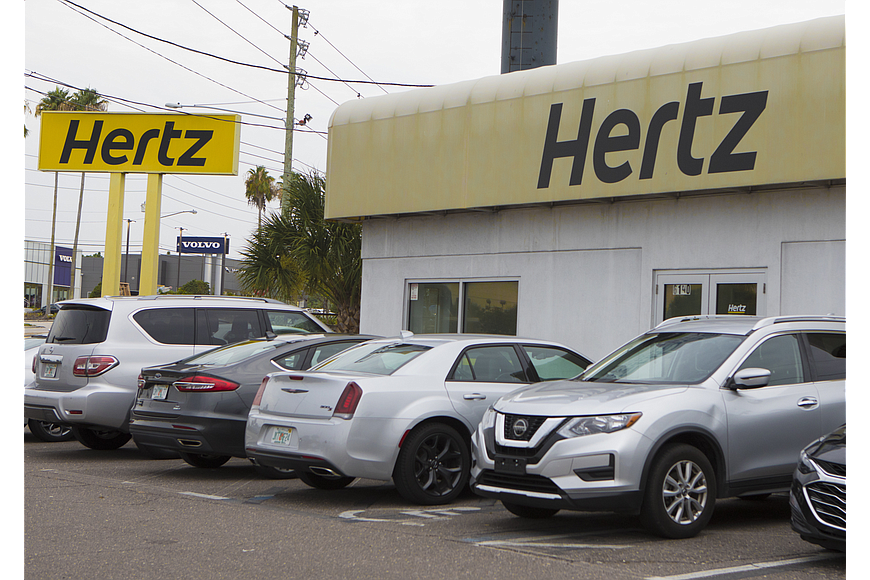- December 25, 2024
-
-
Loading

Loading

ESTERO — Nearly 45 days after The Hertz Corp. emerged from bankruptcy, the company’s board approved more than $3 million in retention bonuses for four senior executives.
The bonuses, approved by the board Aug. 16, are being paid after the company spent a year in bankruptcy, a process that saw almost $5 billion in debt wiped away, and after cutting 14,400 jobs —1,046 jobs in Florida — in 2020.
According to a filing with the U.S. Securities & Exchange Commission Aug. 17, the bonuses will be split among four executives, with almost half, $1.4 million, going to Hertz President and CEO Paul Stone. The bonuses, according to a copy of the agreement included in the SEC filing, guarantee senior executives will remain with Hertz through Jan. 1, 2022.
The money will be issued within three days after the agreement is signed and includes a clawback agreement should the executive leave voluntarily or be fired for cause before Jan. 1.
In addition to Stone, the bonuses will be paid to:
Stone was named CEO of Hertz just days before the company filed for Chapter 11 bankruptcy May 22, 2020. He replaced then president and CEO Kathryn Marinello on May 18. At the time, Stone was vice president and chief retail operations officer at Hertz.
Hertz, in court papers, blamed the sudden shutdown of tourism and global travel caused by the COVID-19 pandemic as what forced it to seek protection. This despite no other major rental car chain, which faced identical headwinds, filing for bankruptcy.
According to its initial Chapter 11 filing, Hertz had $25.8 billion in assets and $24.3 billion in debt on March 31.
Court records show that from March 21 through the day the company filed for bankruptcy, May 22, 2020, daily reservations fell 90% as sales at its retail lots nearly vanished and millions debt payments came due.
To help offset the downturn, the company consolidated leases at off-airport sites in the U.S. and Europe, cut back on the purchase of new vehicles and cut employees.
According to court records, the “workforce cost management” began in March 2020 with furloughs. The hope was that they’d be temporary, but by April it had become clear to Hertz that the shutdown “would not be a transient interruption in its business.”
By May 22, the day the company filed for bankruptcy, 21,000 employees had been affected by the moves with about 14,400 permanently losing their jobs.
Hertz exited bankruptcy Wednesday June 30 with $5.9 billion in capital, its debt load reduced, a new ticker symbol and a new board of directors that included the former president and CEO of the Ford Motor Co.
It left the protection of the bankruptcy court with about $5 billion in debt gone, including all of its European debt, and with a $2.8 billion credit line and $7 billion in financing for its vehicle inventory.
Investment firms Knighthead Capital Management, Certares Opportunities and Apollo Capital Management are among those providing capital to fund the exit plan.